Hyperpigmentation vs melasma: How to tell the difference between these skin conditions
Want to know what counts as hyperpigmentation vs melasma? We asked three leading skin experts for their straightforward explanations
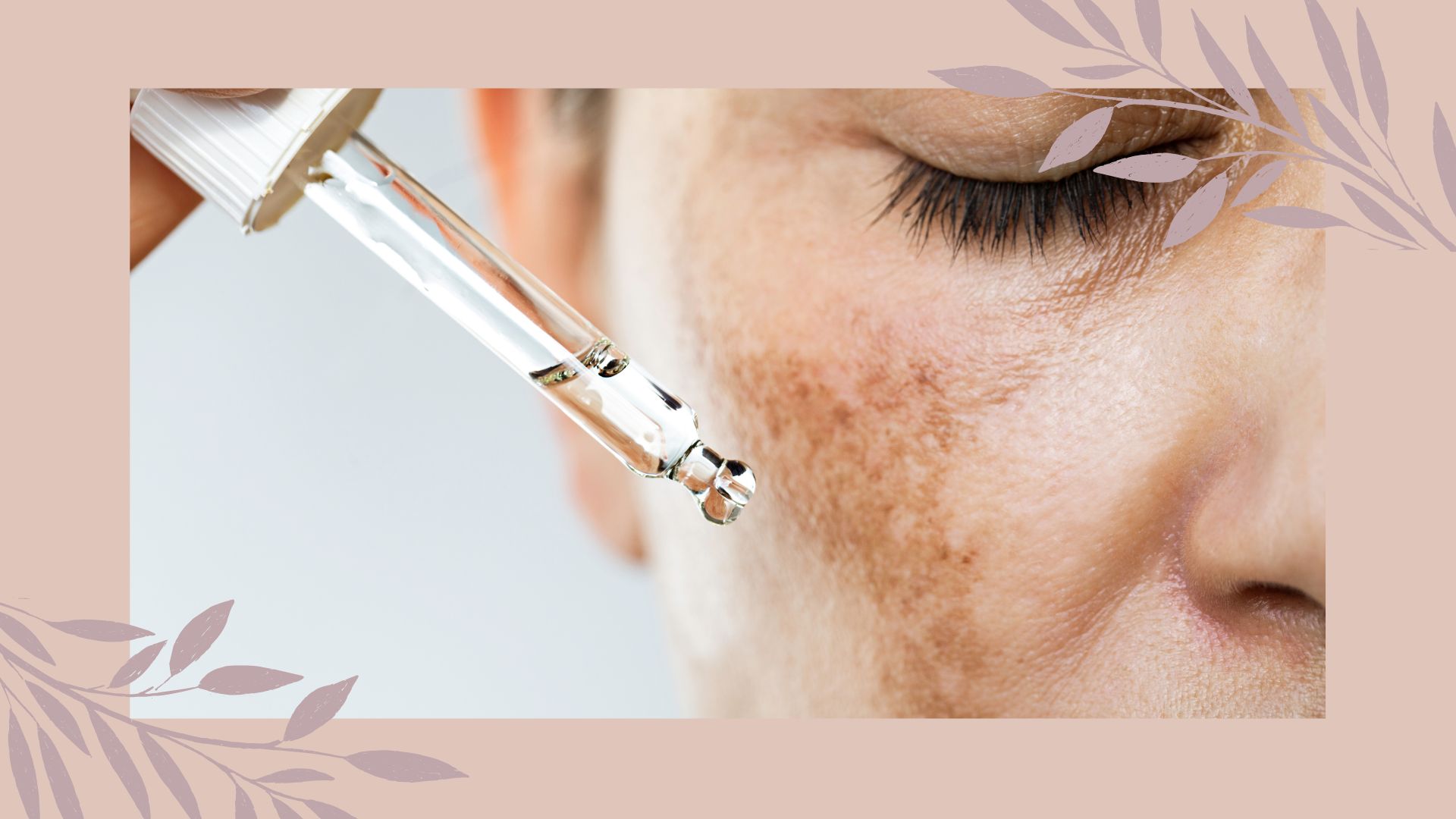

Unsure of the difference between hyperpigmentation vs melasma? It’s the kind of question that leaves most people with either a furrowed thinking face or a blank expression – so you’re not the only one.
Hyperpigmentation is an umbrella term that encompasses a variety of marks including sun spots (also less favourably known as age spots or liver spots) and post-inflammatory hyperpigmentation, which are marks left behind by inflammation like a spot or a cut. Melasma is a type of hyperpigmentation, so sits within this category.
Not all types of hyperpigmentation have the same triggers that cause them to crop up in the first place, and they don’t respond to the same types of hyperpigmentation treatment. But what they do all have in common, is that slathering on your best facial sunscreen will help to prevent them.
Hyperpigmentation vs melasma – explained
What is hyperpigmentation?
“Hyperpigmentation is a generic term referring to areas where the skin is darker than the surrounding skin,” says consultant dermatologist Dr Justine Hextall. It occurs when the melanocytes (a type of skin cell responsible for creating melanin – the pigment that gives our skin its colour) go into overdrive. Instead of creating the usual amount of melanin that would allow them to blend in, they make more, which is why some areas of the skin take on a deeper tone. The “hyper” part of the word reflects this overreaction, but you might also hear it referred to simply as “pigmentation” too.
The opposite of hyperpigmentation is reverse pigmentation, which is where the melanocytes malfunction and make no pigment at all. This results in white patches of skin – imagine an age spot, but without any colour.
So why does hyperpigmentation happen? “One of the most common triggers of hyperpigmentation is inflammation,” explains Dr Hextall. “It is very common to see an increase in pigmentation after a flare of acne or eczema.” Hyperpigmentation as a result of inflammation is especially common in melanin-rich skin tones. In situations where fair skin tones would normally go red, deeper skin tones develop hyperpigmentation.
Another key trigger is UV damage, and exposing our skin to the sun is a bit like waving a red flag to a bull comes to hyperpigmentation. “Exposure to UV damages our skin, and after the age of 40 we really start to reap what we sow,” advises Dr Hextall. “Years of sun exposure start to show in the form of unwanted hyperpigmentation, sun spots, and textural change.”
Sign up for the woman&home newsletter
Sign up to our free daily email for the latest royal and entertainment news, interesting opinion, expert advice on styling and beauty trends, and no-nonsense guides to the health and wellness questions you want answered.
The final cause of hyperpigmentation is hormones, which leads us neatly to a particular type of pigmentation called melasma…

Dr Hextall is a Consultant Dermatologist and has been working in the NHS for more than a decade. She is the medical director of the Tarrant Street Clinic and an expert in rosacea, acne and skin cancer.
What is melasma?
“Melasma is a skin condition that presents as patchy brown and grey areas of hyperpigmentation on the face,” explains Dr Zaniab Laftah, consultant dermatologist at Get Harley. “It is sometimes referred to as ‘mask of pregnancy’ as it typically presents during pregnancy.”
Of all the different types of pigmentation, melasma is the biggest and can cover quite large areas of skin. It’s most common on the face but can appear on the neck and arms too. This makes it more difficult to hide than things like age spots and will be more prominent if you’re not wearing makeup.
Melasma is normally driven by hormones and is most likely to appear during times of intense hormonal change – like during pregnancy or menopause. Some medications, including contraception, can fire it up too. “It is thought that a combination of hormones and UV exposure mainly cause the specific type of pigmentation referred to as melasma,” says Dr Hextall. It’s a frustrating one, because even if you’re vigilant with SPF, “melasma can absolutely affect those who have always been sensible in the sun,” she adds.

Dr Laftah is an experienced Consultant Dermatologist and passionate skin health educator based in London.
Hyperpigmentation vs melasma: What’s the difference?
Not sure whether the mark on your skin is hyperpigmentation vs melasma? It could be both. As melasma is a type of hyperpigmentation, there is plenty of crossover. Both are darker areas of skin, and according to Dr Justine Hextall “as we age unwanted changes in skin pigmentation are common in all skin tones.” However “those who gave melanin-rich skin are more at risk of severe and longer-lasting hyperpigmentation,” explains Dr Laftah.
It’s a common misconception that this is because darker skin tones have more melanocytes, but actually, it’s just that these melanocytes are more reactive. Hyperpigmentation and melasma can both be present all year round but tend to be most prominent during the summer months when our skin is more exposed to the sun – and would naturally deepen with your holiday tan.
The key difference between hyperpigmentation vs melasma is what triggers them. “Both conditions are a result of dyspigmentation, however, the underlying cause and clinical presentation differs,” says Dr Laftah. “Hyperpigmentation is typically secondary to skin inflammation and results in excess production or deposition at the site.” In short, it’s a mark left behind by damage in the skin caused by things like UV exposure and pollution, or by inflammation from skin conditions like acne, eczema, or psoriasis.
Melasma, on the other hand, we don’t know the exact causes of. “There is a genetic and hormonal element,” explains oculoplastic surgeon and aesthetics doctor Dr Maryam Zamani. “Pregnancy and hormonal medications like the oral contraceptive pill and HRT can trigger melasma, and UV exposure and heat can also exacerbate it. Thyroid disorders may have an association with melasma too. While men can be affected, it most commonly afflicts women of child-bearing age in darker skin types.”
Another couple of (already mentioned) differences between hyperpigmentation vs melasma are firstly, that melasma tends to be larger and secondly, that it’s more confined to the face. Hyperpigmentation marks are normally quite small and can appear anywhere on the body, but will only pop up if the area has been inflamed or exposed to the sun. Your hands, therefore, are quite a prime spot for hyperpigmentation.

A board-certified Consultant Oculoplastic Surgeon, Dr Zamani specialises in surgery surrounding the eyes. She is also an expert in facial aesthetics and the founder of skincare brand MZ Skin.
How can you prevent hyperpigmentation and melasma?
Prevention is always better than cure when it comes to hyperpigmentation and melasma. Think of it like getting a stain on a white dress – you might be able to vanish away the mark with some remover spray and careful blotting, but it would be a whole lot easier if you’d been wearing a napkin in the first place. The smartest ways to prevent hyperpigmentation and melasma are:
- Wearing daily sun protection: “Sun protection is the most important factor in reducing the risk of melasma or worsening of hyperpigmentation,” says Dr Laftah. “A broad spectrum sunscreen with sufficient UVA protection is key. Opt for a mineral sunscreen that contains zinc oxide and titanium with iron oxide to block visible light.” There are two technical terms to unpack here – first, the phrase broad spectrum. This means that the sunscreen protects from both UVB and UVA rays. UVB rays are shorter, more intense, and stronger in summer, whereas UVA rays are present all year round and can penetrate through glass and clouds (hence why you should wear sunscreen in winter too). The second term is mineral sunscreen. This differs from chemical sunscreen as instead of taking the rays and converting them into heat, it creates a physical block on the skin that reflects and bounces them away. They are also one of the best sunscreens for sensitive skin and the best sunscreens for acne-prone skin. The only downside of mineral sunscreen is that they tend to be quite thick and chalk-like, and can leave a white cast on deeper skin tones. Remember sunscreen won’t prevent tanning, but will minimise the damage.
- Minimising inflammation: “Keeping skin calm, hydrated and reducing inflammation from conditions like acne and dermatitis will help reduce post-inflammatory pigmentation,” explains Dr Hextall. Keeping up with a consistent skin routine and avoiding anything that could aggravate the skin further is a sensible move. We know it’s tempting, but picking and popping spots might feel satisfying at the time but will only increase the likelihood of them leaving marks behind.
- Balancing your hormones: Dr Zamani recommends, “avoiding hormonal medications” but this comes with a caveat that only if this is the right choice for your health and wellbeing. If you are experiencing melasma and believe it is being triggered by medication, speak to your doctor about alternative options.
How to treat hyperpigmentation vs melasma
Now we've established the similarities and differences between hyperpigmentation vs melasma, we can look at how to fade and improve them.
How to treat hyperpigmentation at home
It is possible to fade hyperpigmentation and treat age spots on your hands and face at home, but you’ll need to be patient. “Using the right daily skin care with ingredients that will help to fade or suppress pigmentation is key for lasting results,” advises Dr Hextall.
“Skincare ingredients that target pigmentation are always on my radar as I suffer from this myself,” adds Dr Zamani. “Retinoids help to brighten skin and increase cell turnover, while vitamin C also helps to brighten as well as prevent the formation of pigmentation. These two ingredients are the gold standard that should be in almost everyone's regimen.” Azelaic acid, niacinamide, alpha arbutin, and tranexamic acid are less widely studied, but all are considered to help play a part in reducing the appearance of smaller areas of hyperpigmentation. Whichever active ingredients you’re using, you’ll need to be really consistent to see that coveted fading.
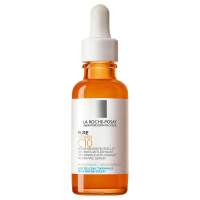
La Roche Posay Pure Vitamin C10 Serum | RRP: £45
Formulated with ascorbic acid, which is considered the purest and strongest form of vitamin C, this is brighter skin in a bottle.
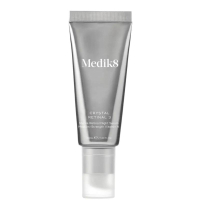
Medik8 Crystal Retinal 3 | RRP: £49
Medik8's Crystal Retinal uses a hardworking yet non-irritating form of retinoid to refresh your complexion. It comes in different strengths, starting with 1 for beginners and 20 for retinoid pros.
How to treat hyperpigmentation in clinic
If hyperpigmentation is a pressing bugbear for you, or you’re finding that it’s too stubborn to shift with skincare alone, then consider getting a professional opinion. “Identifying the underlying cause of hyperpigmentation is key in preventing further pigmentation,” says Dr Laftah, and a dermatologist will be able to help find the root cause.
“When treating pigmentation, I believe that skincare in combination with various light treatments, laser treatments, and peels works well,” advises Dr Zamani. “There is no magic bullet but this combination works best.”
Some treatments that Dr Zamani recommends for hyperpigmentation in-clinic include:
- Broad-band light therapy (also known as BBL) “that targets and treats sun-damaged skin, hyperpigmentation, and tiny blood vessels on the face, neck, and decolletage.”
- Fractional hybrid lasers (like the HALO laser) “to improve skin improve skin texture and tone as well as treat deeper hyperpigmentation and acne scarring.”
- Non-ablative diode laser treatment (like MOXI) “to gently help remove pigment from the skin with little downtime.”
Peels that remove the uppermost layers of skin will also help to reduce the appearance of hyperpigmentation. With all of the best tweakments and treatments for hyperpigmentation vs melasma, it’s really important to visit a reputable, trusted practitioner as there is the potential to cause inflammation in the skin that actually makes the problem worse. This is more common in deeper skin tones, so do your research on the best hyperpigmentation treatments for black skin and go on personal recommendations if possible.
How to treat melasma at home
Unfortunately, in the case of hyperpigmentation vs melasma, melasma is the trickiest to treat, and it’s unlikely you will be able to improve its appearance much at home. That’s not to say that you can’t try ingredients that increase cell turnover like glycolic acid and retinol, or radiance-boosting antioxidants like vitamin C. A doctor may prescribe skin-lightening treatments like hydroquinone, but these aren’t without controversy and not all experts will agree that they’re a good idea.
Ultimately, the best thing you can do is make sure you’re shielding your skin. “Melasma cannot be fully prevented in those with a predisposition,” says Dr Zamani. “It is common for melasma to recur and therefore protecting the skin from UV exposure with a high SPF sunscreen is really important.” Once-a-day application isn’t enough if you’re spending a lot of time outdoors, so you’ll need to learn how to reapply sunscreen over makeup too. Also, in answer to the question does sunscreen expire, the answer is yes it does. Check the labels from last summer’s products before using them again.
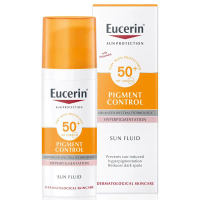
Eucerin Pigment Control Sun Fluid SPF50+ | RRP: £16.99
To keep melasma at bay, you need to be using the highest sunscreen factor possible. This miracle worker from Eucerin prevents new marks and fades existing ones at the same time.
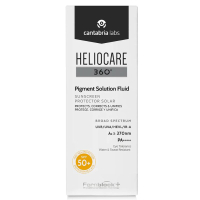
Heliocare 360 Pigment Solution Fluid | RRP: £32.99
Not only is this lightweight sunscreen that's a joy to wear but it's invisible on all skin tones and suitable for even sensitive skin and eyes.
How to treat melasma in clinic
The first thing any dermatologist or experienced skin specialist will do for a patient with melasma is analyse their skin to understand what’s triggering the melasma, and how deep it is in the skin. The deeper it is, the trickier it is to treat. Think of it like a stain that’s had a chance to seep into and saturate a piece of fabric rather than a surface-level mark. “A careful assessment allows a clear management plan with an honest appraisal of likely outcomes from the treatment,” says Dr Hextall. “Managing expectations is key. It is then important to suppress the process before treatment to reduce the risk of unwanted post-procedure pigmentation.”
In-office treatments that Dr Hextall recommends for melasma include:
- Peels: “I favor The Perfect Peel, which is a medium-depth peel that is suitable for a range of skin tones. It may be a one-off treatment or more than one may be required.”
- Microneedling: “Combining micro needling with topical anti-pigmentation treatments such as tranexamic acid and anti-oxidants” works well as a two-pronged approach.
- Broad-band light (also known as BBL) or intense pulsed light (also known as IPL): “For photodamage, BBL and IPL may be helpful.”
- Fractional laser: Combining the above light treatments with fractional laser will offer “quicker, more effective results.”
Thanks to plenty of expert input, we hope you'd now feel confident explaining the differences (and similarities) between hyperpigmentation vs melasma.
Jess Beech is an experienced fashion and beauty editor, with more than eight years experience in the publishing industry. She has written for woman&home, GoodtoKnow, Now, Woman, Woman’s Weekly, Woman’s Own and Chat, and is a former Deputy Fashion & Beauty Editor at Future PLC. A beauty obsessive, Jess has tried everything from cryotherapy to chemical peels (minus the Samantha in Sex and The City-worthy redness) and interviewed experts including Jo Malone and Trinny Woodall.
-
 Smeg's retro hand mixer puts the 'king' in baking - I'm convinced it's the best
Smeg's retro hand mixer puts the 'king' in baking - I'm convinced it's the bestThe Smeg 50s Style Hand Mixer is every keen baker's dream: it whips up cream, mixes cookie dough, and kneads bread like the best hand mixers on the market
By Laura Honey Published
-
 From highlights to glosses, here's everything you should know before colouring Afro-textured hair
From highlights to glosses, here's everything you should know before colouring Afro-textured hairKeep your curls and coils healthy during colour processes with this beauty editor's guide
By Keeks Reid Published